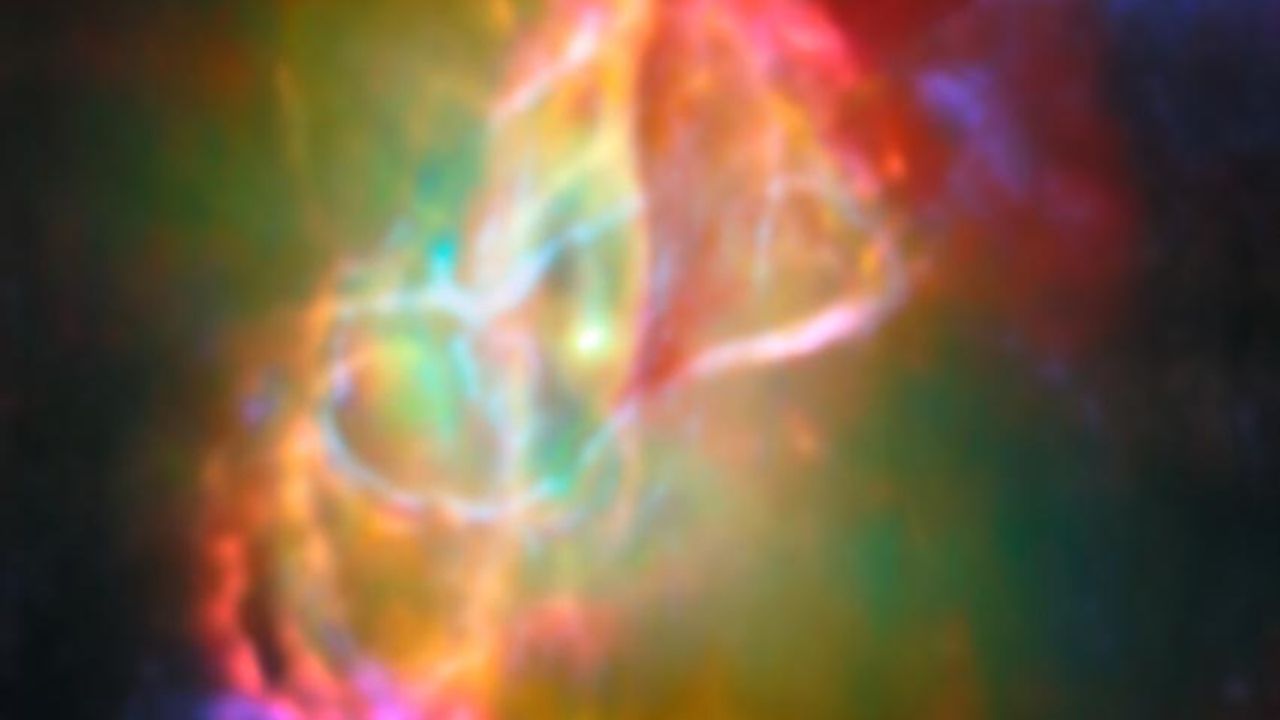A new image from the James Webb Space Telescope (JWST) has captured the formation of cosmic dust particles that serve as building blocks for planets. This groundbreaking observation, led by Mikako Matsuura from Cardiff University, marks a significant advancement in understanding how the basic materials of planets coalesce around young stars.
Located approximately 3,400 light-years away in the constellation of Scorpius, the Butterfly Nebula, also known as NGC 6302, is a planetary nebula created by the death of a sun-like star. This star has exhausted its hydrogen core, resulting in an expulsion of its outer layers into space, forming the nebula. The remnant core has become a white dwarf, radiating at a temperature of 220,000 degrees Celsius (396,000 degrees Fahrenheit). The nebula’s striking bi-polar shape resembles butterfly wings, while its central region consists of a dark torus of dust observed edge-on.
The JWST’s Mid-Infrared Instrument (MIRI) provided new insights into this dusty torus, revealing crystalline silicate dust grains larger than typical interstellar particles. While interstellar dust is generally around 0.1 microns in size, MIRI detected grains measuring a millionth of a meter. These larger grains are more consistent with those found in star- and planet-forming regions, indicating a critical step in the planet-building process.
The dust detected within the Butterfly Nebula originates from the remnants of previous generations of stars. As this dust disperses through interstellar space, it eventually becomes part of the gas clouds that contribute to new star systems. Until now, the mechanisms driving the growth of larger dust grains had remained somewhat elusive. Matsuura notes, “For years, scientists have debated how cosmic dust forms in space. But now, with the help of the powerful James Webb Space Telescope, we may finally have a clearer picture.”
Further analysis suggests that these dust grains have been growing over time, largely due to chemical reactions stimulated by the intense heat of the white dwarf at the nebula’s center. The JWST’s observations also identified quartz crystals within the nebula, demonstrating the diversity of conditions present in this celestial environment.
In addition to quartz, the JWST detected polycyclic aromatic hydrocarbons (PAHs), common carbon-based molecules found on Earth in products such as burnt toast and car exhaust. These compounds are abundant in deep space and are believed to play an essential role in the chemistry of star and planet formation, as well as potentially contributing to prebiotic chemistry. The PAHs in the Butterfly Nebula appear in flat, ring-like structures, likely formed from the interaction of gas with particle bubbles expelled by the white dwarf.
Over the course of tens of thousands of years, the vibrant activity of the Butterfly Nebula will gradually fade, allowing these dust grains, quartz, and PAHs to drift through space. These materials will seek new homes in gas clouds, where they may once again contribute to the formation of stars and planets.
The findings from the JWST’s observations of the Butterfly Nebula were officially reported on August 27 in the Monthly Notices of the Royal Astronomical Society. This discovery not only enhances our understanding of cosmic dust formation but also opens new avenues for exploring the lifecycle of stars and the birth of planetary systems.
